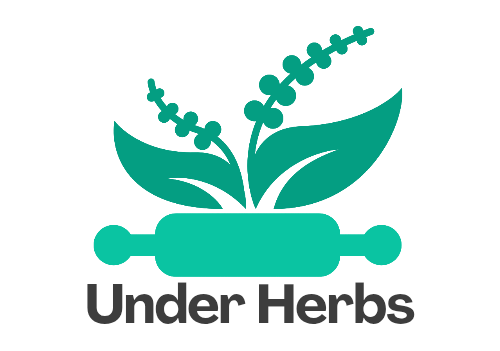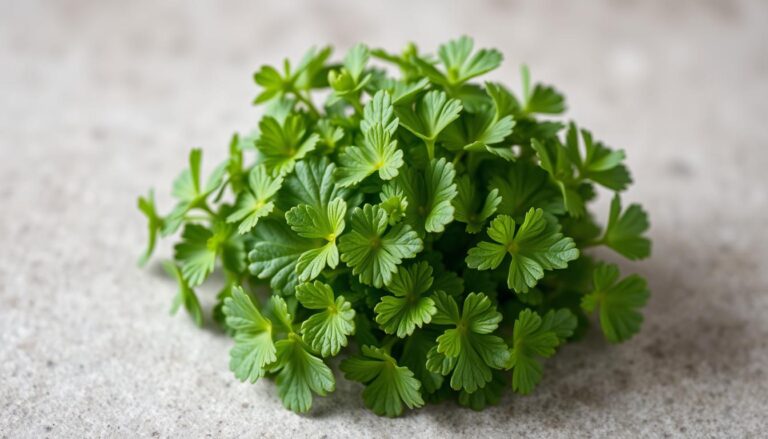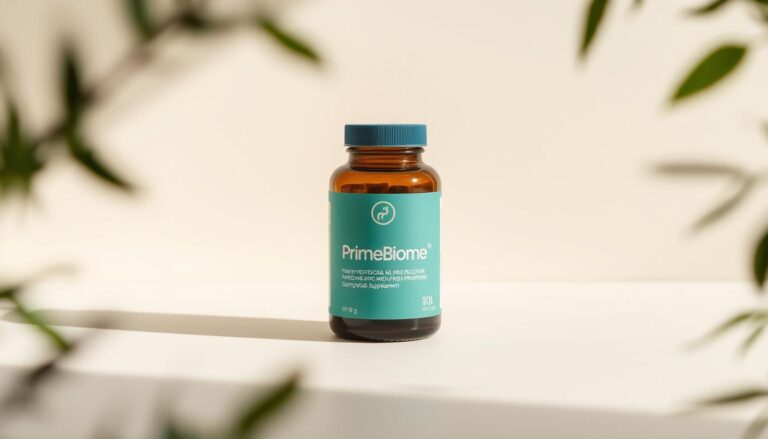Effective Herbal Remedies to Relieve Headaches
Are you tired of using painkillers for headaches? Natural headache relief is closer than you think, thanks to herbal treatments.
Headaches can really disrupt your life and work. Many are now choosing herbal remedies for headaches instead of regular meds. This is because they are safer and more natural.

You don’t have to keep suffering. Looking into these natural options can help you manage headaches better. This article will show you some of the best herbal solutions for headache relief.
Key Takeaways
- Discover the most effective herbal treatments for headache relief.
- Understand how these natural remedies work to alleviate headache symptoms.
- Learn how to incorporate these treatments into your daily routine.
- Explore the benefits of using herbal remedies over conventional painkillers.
- Identify potential interactions or side effects to be aware of.
Understanding Different Types of Headaches and Their Causes
Have you ever had a headache? There are many types, each with its own causes and triggers. Knowing these differences helps find the right relief.
Common Headache Types
There are several common headaches, like tension headaches, migraines, and cluster headaches. Tension headaches feel like a band or squeeze around your forehead.
Migraines cause a throbbing pain on one side of your head. They often come with nausea and sensitivity to light and sound.
Cluster headaches are very severe. They happen in cycles and usually affect one side of your head.
| Headache Type | Characteristics | Common Triggers |
|---|---|---|
| Tension Headache | Band-like pressure around the forehead | Stress, poor posture |
| Migraine | Throbbing pain, often one-sided, with nausea and sensitivity to light/sound | Hormonal changes, certain foods |
| Cluster Headache | Severe, one-sided pain, occurring in clusters | Alcohol, certain smells |
Triggers and Causes
Knowing what triggers your headaches can help you manage them. Common triggers include stress, hormonal changes, and certain foods or smells.
When to Seek Medical Attention
While many headaches can be managed with self-care and herbal remedies, some need medical attention. If you have sudden, severe headaches, or if they’re with other symptoms like confusion, weakness, or trouble speaking, get medical help right away.
Why Choose Herbal Remedies for Headaches
Looking for a natural way to handle headaches? Herbal remedies might be a good choice. Many people prefer them because they don’t have the side effects of regular medicines.
Benefits of Natural Approaches
Herbal remedies have many advantages for those with headaches. They come from plants and have been used for centuries. Choosing best herbal remedies for headaches can help you avoid the side effects of common drugs. They also support your overall health, focusing on a complete wellness approach.
Limitations of Over-the-Counter Medications
Over-the-counter drugs can quickly ease pain, but they have downsides. Using them too much can make you dependent. They might not even fix the headache’s root cause. On the other hand, herbal supplements for head pain aim for lasting relief and prevention.
Integrating Herbs with Conventional Treatments
You can also mix herbal remedies with regular treatments with a doctor’s help. This mix can enhance the benefits of both natural and drug-based treatments. It creates a well-rounded plan for managing headaches.
The Science Behind Herbal Remedies for Headaches
Research shows herbal remedies for headaches are promising. They offer new ways to treat headaches. Knowing how these remedies work can help you choose wisely.

How Plant Compounds Affect Pain Pathways
Herbal remedies have compounds that affect pain in our bodies. For example, feverfew has parthenolide. It stops serotonin and prostaglandins from causing headaches. Ginger also helps by reducing inflammation and pain.
“Herbal remedies for headaches are not just old practices,” says a top researcher. “They are also supported by science. This mix of old wisdom and new research is leading to better headache treatments.”
Research Supporting Herbal Interventions
Many studies have looked into herbal remedies for headaches. Butterbur is one example. It has been shown to lower migraine frequency in trials. This research shows herbal remedies can be good alternatives or additions to usual treatments.
Comparing Effectiveness with Conventional Treatments
It’s key to compare herbal remedies with usual treatments. Conventional meds can work fast but may have side effects. Herbal remedies are safer but might take longer to start working. A mix of both can be the best way to handle headaches.
Learning about the science of herbal remedies helps you find the right headache relief. It makes it easier to choose a treatment that suits you.
Feverfew: A Time-Tested Migraine Solution
Feverfew has been used for centuries to help with migraines. It’s a key part of traditional medicine for headaches.
How Feverfew Works
Feverfew’s power comes from compounds like parthenolide. These stop serotonin and histamine release, which cause migraines. It also reduces inflammation and controls blood vessel changes, easing migraine symptoms.
Proper Dosage and Preparation
Knowing how to use feverfew is important. It comes in capsules, teas, and tinctures. A daily dose of 50-100 mg of feverfew extract is often recommended for preventing migraines.
| Preparation Method | Recommended Dosage | Frequency |
|---|---|---|
| Capsules | 50-100 mg | Once daily |
| Tea | 1 teaspoon dried leaves | 2-3 times a day |
| Tincture | 10-15 drops | 3 times a day |
Potential Side Effects and Precautions
Feverfew is usually safe but can cause side effects. These include allergic reactions, stomach issues, and mouth sores. If you experience any problems, talk to a doctor.
Drug Interactions to Consider
Feverfew can interact with some medications, like blood thinners and anti-anxiety drugs. Always check with a healthcare provider before using feverfew, especially if you’re on other meds. This helps avoid bad interactions and ensures it’s safe for you.
Adding feverfew to your natural headache relief plan can be helpful. It works well with other herbs like peppermint and ginger. Knowing how to use feverfew and its possible side effects can help you use it safely for migraine relief.
Peppermint: Cooling Relief for Tension Headaches
Peppermint is a natural way to ease tension headaches. These headaches often come from stress, bad posture, or muscle tension in the neck and scalp.
Peppermint works well because it has menthol. This helps relax muscles and boosts blood flow.
The Science Behind Peppermint’s Effectiveness
Peppermint oil has menthol, which cools the skin and muscles. This helps ease tension. When used on the forehead, neck, and scalp, it can relax muscles and help with tension headaches.
Application Methods: Oil, Tea, and Supplements
There are many ways to use peppermint for tension headaches:
- Peppermint Oil: Apply diluted peppermint oil to the temples or neck.
- Peppermint Tea: Drinking peppermint tea can help relax the body.
- Supplements: Peppermint capsules or extracts can be used, though their effectiveness may vary.
A comparison of these methods is shown below:
| Method | Effectiveness | Ease of Use |
|---|---|---|
| Peppermint Oil | High | Easy |
| Peppermint Tea | Moderate | Very Easy |
| Supplements | Variable | Easy |
DIY Peppermint Remedies
You can make your own peppermint remedies at home. To make peppermint tea, steep fresh or dried peppermint leaves in hot water. For a topical treatment, mix peppermint oil with coconut oil and apply it to your temples or neck.

Peppermint is usually safe, but some should be careful. People with GERD might find symptoms worse because peppermint relaxes the lower esophageal sphincter.
Ginger: Nature’s Anti-Inflammatory Headache Remedy
Ginger is a strong anti-inflammatory for headaches. It’s one of the best herbal remedies for headaches. People have used ginger for centuries in traditional medicine.

Pain-Relieving Properties
Ginger helps with headache pain because of its anti-inflammatory effects. It has compounds like gingerol and shogaol. These help reduce pain by blocking certain body pathways.
Ways to Consume Ginger for Headaches
You can use ginger in different ways to get relief. Here are some common methods:
- Tea: Steep fresh ginger in boiling water to make a soothing tea.
- Capsules: You can find ginger supplements in capsule form.
- Cooking: Add fresh or dried ginger to your meals.
Combining Ginger with Other Remedies
Ginger works well with other herbal remedies. For example, mixing it with peppermint offers both anti-inflammatory and cooling relief.
Recipe: Ginger Headache Relief Tea
To make ginger tea, you’ll need:
- 1-inch piece of fresh ginger
- 1 cup boiling water
- Optional: honey or lemon for taste
Steep the ginger in boiling water for 5-7 minutes. Then, strain and enjoy. You can add honey or lemon for flavor.
Adding ginger to your routine can help with headaches. It’s a versatile and effective herbal headache remedy. Its anti-inflammatory properties make it a great choice for headache relief.
Willow Bark: The Natural Aspirin Alternative
Looking for a natural way to ease headaches? Willow bark is an old remedy that might help. It has salicin, like aspirin, to reduce pain and swelling.
Historical Use and Modern Applications
For ages, willow bark was used for pain and swelling. Now, it’s seen as a herbal supplement for head pain. You can find it in capsules, teas, and tinctures.

Preparation Methods and Dosage
You can take willow bark in different ways. The usual dose is 100 to 200 mg of salicin a day. It’s best to follow the product’s guide or talk to a doctor for the right amount.
Safety Considerations
Willow bark is mostly safe but can upset your stomach or cause allergies in some.
Who Should Avoid Willow Bark
Some people should not use willow bark. Kids under 18 might get Reye’s syndrome. Pregnant or breastfeeding women, and those with bleeding issues or on blood thinners should also avoid it.
Before trying willow bark for migraine herbal treatment, talk to a doctor. This is especially important if you have health problems or take other medicines.
Butterbur and Lavender: Prevention and Relief
Butterbur and lavender are natural options for headache relief. They can help manage your symptoms better.
Migraine Prevention with Butterbur
Butterbur (Petasites hybridus) might prevent migraines. It has compounds that reduce inflammation and stop blood vessel spasms. This can stop migraine attacks.
Studies show that butterbur can cut down migraine frequency. It’s best when taken regularly.
Important Warnings About Butterbur Products
Butterbur is good, but only use PA-free products. PA-free means they don’t have harmful compounds that can harm your liver. Always talk to a doctor before starting any supplement, especially if you have liver problems or are pregnant.
Lavender Aromatherapy for Immediate Relief
Lavender oil, from Lavandula angustifolia, is calming. It’s used in aromatherapy to quickly ease headache symptoms. Lavender’s scent can lower stress and help you relax, which is great for tension headaches.
To use lavender oil, add a few drops to your bath, inhale it from a cloth, or apply it to your temples after mixing with a carrier oil. Find what works for you and use it when headaches start.
Using butterbur for prevention and lavender for relief can help lessen headache frequency and severity. Always check with a healthcare professional before trying new herbal remedies to make sure they’re safe for you.
Lesser-Known Herbal Remedies for Headaches
There are many herbs that can help with headaches, beyond the well-known ones. These medicinal herbs for headaches offer natural relief for those looking for it.
Rosemary and Its Benefits
Rosemary helps improve blood flow and eases pain. You can use its essential oils in aromatherapy to ease headaches. Try inhaling rosemary oil or mixing it with a carrier oil for massage.
Chamomile for Relaxation and Pain Relief
Chamomile is great for calming down, making it perfect for tension headaches. Enjoy chamomile tea or soak in a warm bath with chamomile essential oil to relax and ease pain.
Valerian Root for Tension Headaches
Valerian root is a natural relaxant that helps with tension headaches. It can be taken as tea or supplements to reduce stress and promote relaxation.
Lemon Balm and Skullcap
Lemon balm and skullcap are also good for headaches. Lemon balm tea can calm you down, while skullcap helps ease tension and pain.
Adding these headache relief herbs to your daily life can help manage and prevent headaches. Learning about these herbs opens up more natural ways to fight headaches.
- Rosemary: Improves circulation and reduces pain
- Chamomile: Promotes relaxation and eases tension headaches
- Valerian Root: Acts as a natural sedative for tension headaches
- Lemon Balm: Offers a calming effect
- Skullcap: Eases tension and reduces pain
Using these herbs can help you find relief from headaches without just relying on medicine.
Creating Your Own Herbal Headache Relief Protocol
Creating a personalized headache relief protocol is easier with the right herbal headache remedies. By understanding your headache triggers and types, you can choose the most effective herbal remedies for your specific needs.
Identifying Your Headache Triggers
The first step in creating your headache relief protocol is to identify your headache triggers. These can include stress, certain foods, or environmental factors. Keeping a headache journal can help you track when headaches occur and what might have caused them.
Trigger identification is crucial because it allows you to take preventive measures. For instance, if you notice that certain foods trigger your headaches, you can avoid them.
Matching Herbs to Headache Types
Different herbal headache remedies are suited for different types of headaches. For example, feverfew is often used for migraines, while peppermint can provide relief for tension headaches. Understanding the characteristics of your headaches will help you choose the most appropriate herbal remedy.
Building a Personalized Treatment Plan
Once you’ve identified your triggers and chosen the appropriate herbal remedies, you can start building your treatment plan. This might involve using a combination of herbs or alternating between different remedies based on your symptoms.
Tracking Effectiveness
It’s essential to track the effectiveness of your headache relief protocol. Keeping a record of your headaches and the remedies you’ve used can help you refine your approach over time.
Sample Headache Journal Template
A headache journal can be as simple as a notebook or a mobile app. Here’s a basic template you can use:
- Date and time of headache
- Type of headache (e.g., migraine, tension)
- Triggers (if known)
- Remedy used
- Dosage
- Effectiveness
Conclusion: Finding Your Natural Headache Solution
You now know about many herbal remedies for headaches. These natural options can help you avoid over-the-counter drugs. They offer a holistic way to manage headaches.
Herbs like feverfew, peppermint, and ginger are great for headache relief. They work by reducing pain and swelling. You can use them in teas, supplements, or as topical treatments.
To find the best natural remedy for you, think about your headache type and what triggers it. Try out different herbs and see how they work. Adding herbal remedies to your routine can help you manage headaches naturally. This can greatly improve your health and well-being.
FAQ
What are the most effective herbal remedies for headaches?
Effective herbal remedies for headaches include feverfew for migraines and peppermint for tension headaches. Ginger is also good for its anti-inflammatory effects. Willow bark acts like natural aspirin, and butterbur helps prevent migraines.
How do herbal remedies compare to conventional headache treatments?
Herbal remedies offer a natural way to treat headaches with fewer side effects. Studies show they can be as good as traditional treatments for some headaches.
Can herbal remedies be used alongside conventional headache medications?
Yes, you can use herbal remedies with traditional treatments. But, always talk to a doctor first to avoid any bad reactions.
What is the proper dosage for feverfew in treating migraines?
The right dose of feverfew is 50-100 mg of dried leaves a day for migraines. Always follow the instructions or ask a doctor.
How can peppermint be used for tension headache relief?
Use peppermint oil topically, as tea, or supplements for tension headaches. Mix peppermint oil with a carrier oil and apply it to your temples or neck.
Are there any safety considerations when using willow bark for headaches?
Yes, willow bark has salicin like aspirin. Be careful if you’re allergic to aspirin or have certain health issues. It’s also not safe for kids because of Reye’s syndrome risk.
Can lavender be used for immediate headache relief?
Yes, lavender can help headaches right away. Use lavender essential oil through diffusion or direct inhalation to relax muscles and improve mood.
What are some lesser-known herbal remedies for headache relief?
Some lesser-known remedies include rosemary for pain, chamomile for relaxation, and valerian root for tension headaches. Lemon balm and skullcap also help calm you down.
How can I create a personalized herbal headache relief protocol?
First, find out what triggers your headaches. Then, choose herbs that match your headache type. Keep track of what works and adjust as needed. Always ask a doctor for advice.
Are there any natural headache relief methods that can be combined with herbal remedies?
Yes, besides herbs, you can try staying hydrated, reducing stress with meditation or yoga, and sleeping well. These methods can help with headaches too.







